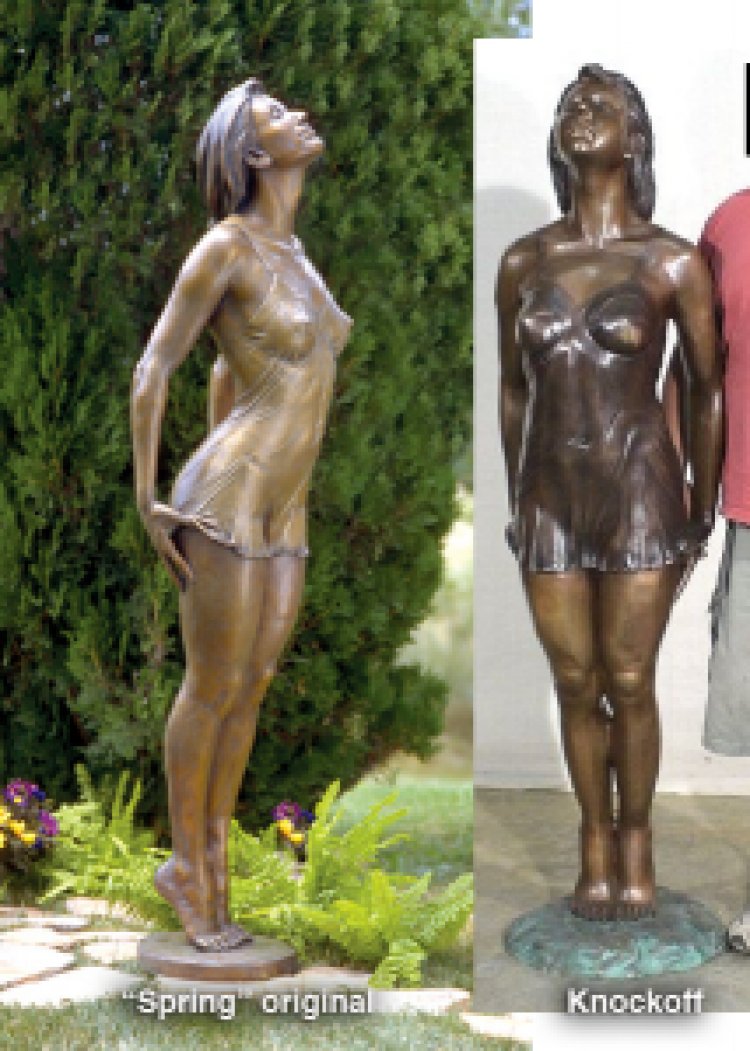Victor Issa, Acclaimed Figurative Sculptor, Examines Instances of Those Copying Other Artists

LOS ANGELES, CA, UNITED STATES: A dispute over 'The Little Mermaid'. Perched by a harbor in Asaa, a Danish village with fewer than 1,200 residents, is a statue of a mermaid that resembles a more famous one in Copenhagen. For the heirs of Edvard Eriksen - the artist who sculpted the Copenhagen landmark - the Asaa mermaid is too similar. They began legal proceedings demanding that it be torn down, and that they receive financial compensation.
Victor Issa, Creating Living Bronze ™, an award-winning sculptor, has some thoughts on this matter. "It is said that art and beauty are in the eye of the beholder. It can be argued that similarity between two objects or two people is also in the eye of the beholder. Technically an artist can point to very specific differences between his work and a famous similar piece of art, which can release the copying artist from liability. But what the general public can easily notice is if the spirit of the new work is clearly attempting to capture that of the original."
Where Copenhagen's mermaid is bronze, Asaa's is carved from granite. The Asaa mermaid is also plumper, with coarser facial features, though her posture is the same. "How else is she going to sit?" asked Mikael Klitgaard, the mayor of the municipality that includes Asaa. "She's a mermaid. You can't put her in a chair."
Issa continues, "I can hardly be completely objective on this subject. The first time I encountered an unauthorized copy of one of my sculptures, I was sick to my stomach, it literally felt like a gut-punch. It took me days to recover."
The Eriksen estate has a history of lawsuits over images of the sculpture, though its copyright will expire in 2029, as Lisa Abend reports in The Times. Eriksen's heirs recently sued a Danish newspaper after it published a cartoon of a zombified mermaid and a photograph of the sculpture wearing a mask. A court fined the newspaper for about $45,000.
"It seems to me that an artist whose driving creative force is to “create" as an expression of his or her journey, is more likely to go out of their own way to avoid even the hint of copying someone else. I would make every effort to come up with an even better design," states Issa. "In my opinion, it is only okay to copy another artist for the purpose of learning from the process, and the completed work is never sold. It can be gifted or donated, with explicit mention of the original work and the original artist."
This time, the estate is seeking $6,000 in compensation. "If ours was bronze, with the same height and face: OK. But they are quite different. Besides, it's clear she's local," Klitgaard said with a wink. "She looks just like an Asaa girl."
Issa concludes, "Seeing that the artist in this case sold his sculpture which clearly hints of the original, he would owe at least an apology and perhaps acknowledging the original source on the signage located near the sculpture, with humble gratitude. Perhaps the parties can come to an honorable solution along those lines. On the other hand, the Eriksen estate does seem to be a bit overzealous in protecting something that truly needs no protection or defense. The two sculptures could not be confused for each other. And if the granite version has intrinsic artistic merit, time will tell. In the meantime, Eriksen’s Little Mermaid in Copenhagen stands (or sits in this case) unequaled."















































